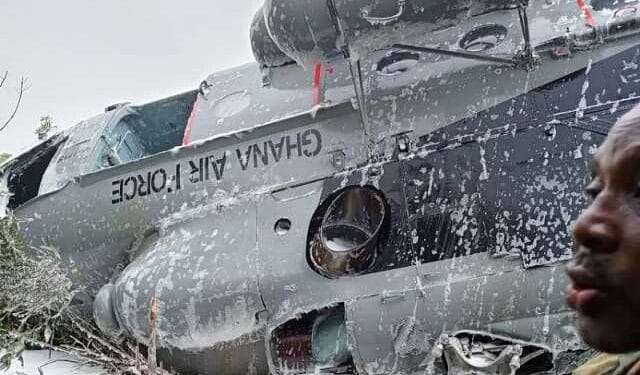An analysis of the recently released helicopter crash report reveals significant shortcomings, leaving critical questions unanswered and failing to provide meaningful closure for the victims’ families or the public.
While the report cites a “sudden loss of altitude” as the immediate cause, it does not identify the underlying reason, whether mechanical failure, human error, or weather conditionsrendering the conclusion superficial.
Follow The Ghanaian Standard channel on WhatsApp for the latest news stories from Ghana.
Central Failure: Lack of Clear Causation
The report identifies the immediate precursor but does not address the root cause.
- Sudden Loss of Altitude: The stated cause is tautological, as every helicopter crash inherently involves altitude loss.
- Unanswered Question: It remains unclear what triggered the altitude loss:
- Mechanical fault
- Human error
- Weather conditions
- Impact: Families and the public are left without a substantive explanation, undermining trust in the investigation.
Narrow Investigative Scope
The methodology is overly technical and fails to consider human factors or broader evidence.
- Technical Jargon: The report is dense and inaccessible to the general public, limiting understanding.
- Neglect of Human Element: Psychological and background assessments of the crew and passengers were not conducted, missing critical context.
- Unexplored Evidence: The helicopter’s black box, which could reveal warnings, crew communication, and flight conditions, was not fully leveraged to provide insight.
Contradictory Findings and Recommendations
Key conclusions conflict with the proposed solutions.
| Finding | Suggests modernising the fleet, which does not address the unknown cause |
|---|---|
| Helicopter deemed “airworthy” and “serviceable” | Suggests modernizing the fleet, which does not address the unknown cause |
| Missing unspecified “state-of-the-art security features” | No clarification provided, preventing informed discussion on future procurement |
Simply purchasing new helicopters does not solve the problem if the underlying cause remains unidentified.
Need for Continued Investigation
The report is preliminary at best and cannot offer closure.
- Failure to Provide Closure: Families lack a clear understanding of why the crash occurred.
- Learning from Experience: Without identifying the root cause, corrective measures and future decisions cannot be effectively implemented.
- Call for Deeper Inquiry: The investigation must continue to answer fundamental questions beyond the obvious observation that a helicopter cannot crash without losing altitude.
The helicopter crash report falls short of providing clear answers, leaving the cause of the tragedy unresolved. Critical questions about mechanical issues, human error, or weather conditions remain unanswered, and the narrow, technical focus overlooks the human element. Without further investigation, families and the public cannot gain closure, and lessons necessary to prevent future incidents remain unknown.









